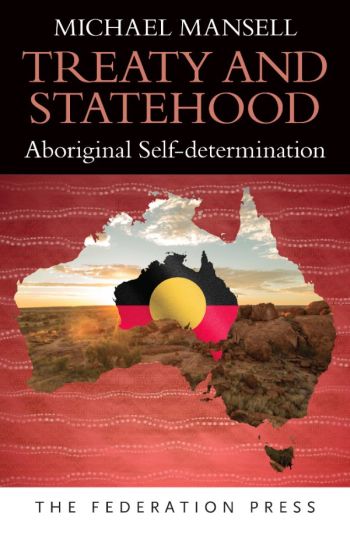
If governments of Australia agreed to share power with Aboriginal people, what would the result be? And if Australia was to have a settlement or a treaty with Aboriginal and Torres Strait Islanders, what would a treaty deal with and how would a treaty affect the general public? Is there anything beyond a treaty?
Treaty and Statehood: Aboriginal Self-determination, by Aboriginal author Michael Mansell, answers these questions and more. Mansell examines the New Zealand model of designated Māori seats and applies the idea to comprise 12 Indigenous Senators in Australia. He argues designated seats and a treaty are constitutionally permissible, and details the possible content for a treaty. He discusses the meaning of self-determination and its limitations, and also thoroughly reviews Aboriginal sovereignty and its function in a modern Australia.
The book critically examines the legality of designated seats, treaty, sharing of power and autonomous communities. The legal examination is broken down into easy-to-understand language. Ultimately, Mansell looks at whether justice can best be served to Aboriginal people through a new State of Australia.
This new idea of a seventh State – or First State for the First peoples, as the author prefers – is constitutionally legal. Its practicality is also critically examined, including the rights each Aboriginal community or ‘nation’ would have under statehood.
This is a book that answers our query about what reconciliation ultimately means and how it can be achieved.